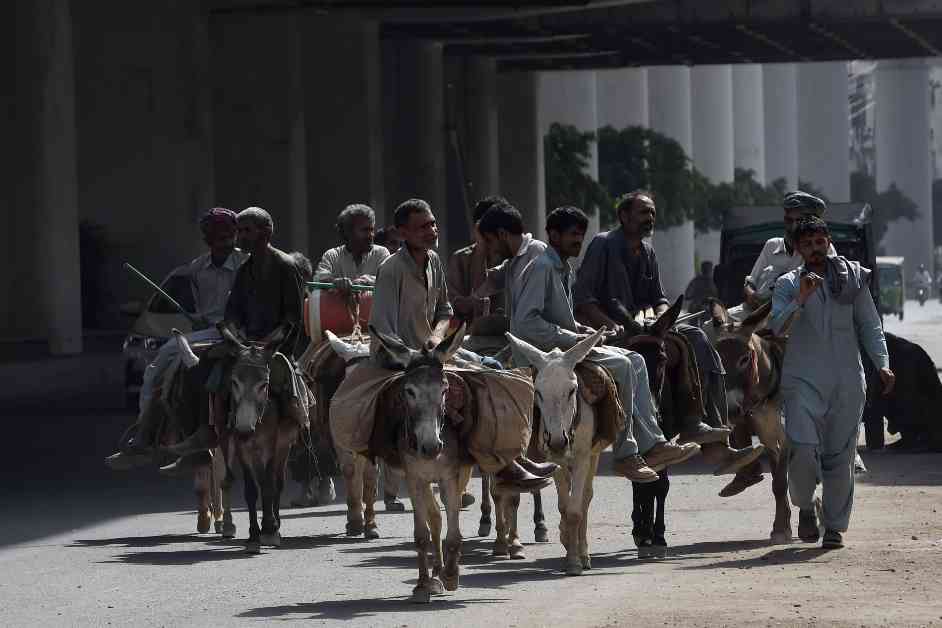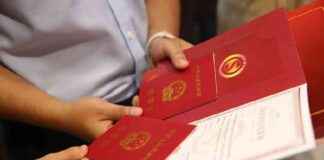Title: Are Donkey Farms Good Business in Pakistan?
Every Friday, at an open air market in the outskirts of Quetta, the mile-high capital of Pakistan’s southwestern Balochistan province, locals gather to buy and sell donkeys. For generations, these animals have been the primary means of transporting goods and people. Donkey carts have remained a popular form of transportation for Pakistan’s poorest people, even as motorbikes, cars, trucks, and buses have clogged up the streets of Pakistani cities. Now there’s a new buyer for Quetta’s donkeys—and it’s not the men who drive donkey carts.
Donkey hides are in high demand in China to produce a beauty treatment known as ejiao, which is based on traditional Chinese medicine. The ejiao industry has boomed in recent years: By 2023, its market size had exceeded 58 billion renminbi (U.S.$8 billion), according to Beijing-based business and finance consulting firm Newsijie. But in February 2024, the African Union banned the export of donkey hides to China for a variety of reasons, primarily that donkeys sold for short-term profits mean that households lose an important aid to frugal life, which often results in women being forced to do hard physical labor for farming or the transport of goods.
Since the African Union ban, buyers have been coming to Pakistan to secure their supply. The trade probably began slowly: “My suspicion is that small-scale Chinese operators figured out that Pakistan is a place where they can readily import donkey meat and hides from,” says Dr. Hasan H. Karar, an associate professor at Lahore University of Management Sciences who researches bazaars and markets in Central Asia. According to Muhammad A. Kavesh, Associate Professor of Anthropology and Director of the South Asia Research Institute at the Australian National University, who studies animal trade in traditional medicine around the world, the trade began in earnest in 2014 and 2015, when “about 200,000 donkey skins were sold to China.” However, a ban was soon imposed because Pakistani authorities feared that donkey meat might be sold domestically as a side product: donkey meat is haram, or forbidden, for Muslims to eat.
But an informal trade continued. In 2017, a Chinese national and his Pakistani accomplices were indicted on charges of attempting to smuggle more than 4,700 donkey hides worth 118 million Pakistani rupees (then worth about U.S.$1.79 million). This year, prices have skyrocketed: One skin can fetch as much as 300,000 Pakistani rupees, or about U.S.$1,075, according to Pakistan’s Express Tribune. Some vendors at the Quetta market say prices were even higher.
Why the African Union Stopped the Donkey Hide Trade with China Lauren Johnston The African Union’s unprecedented decision to ban the trade of donkey skin ended a hitherto fast-evolving China-Africa business. It also is the result of an unusual agreement between the 55 African Union member countries on a matter that affects…
The trade shows how Chinese companies will source whatever they need from wherever they can get it. It also illuminates how the “iron brotherhood” between Pakistan and China makes for some odd business, such as Muslims making money from selling products that they are forbidden from consuming. As Chinese consumption continues to grow, it will not only upend markets, but bend cultural norms around the world.
In February this year, China’s Hangeng Trade Company opened a $7 million donkey slaughterhouse in Gwadar, a sleepy port town that China has been trying to develop into a key hub of its Belt and Road Initiative to connect China and the world with communication, transport, and infrastructure projects. The Hangeng slaughterhouse will supply about 300,000 donkey skins a year to China, according to officials cited by Nikkei. One reason for the establishment of the slaughterhouse, according to Kavesh, is “to ensure haram meat and the donkey skin goes only to China without contaminating the local beef supply-chain.”
There seems to be room for growth: China’s appetite for the skins is vast, and there are nearly 6 million donkeys in Pakistan, according to Aadil Nakhoda, an economist based in Karachi. But this headcount may be unsustainable if the demand from China for donkey hides continues, and there is no consensus on the donkey population. Kavesh says that he has “interviewed animal welfare organizations, government departments, and relevant NGOs, and all agree that Pakistan does not have close to six million donkeys.”
In a paper titled “Donkey Trade: Challenges to Sustaining Mutualism in Rural Pakistan,” Kavesh also notes that “China’s demand for donkey skins has placed unprecedented pressure on the global donkey population.” The fear of donkey depopulation is shared at the local level in Pakistan: Irshad, a farmer from Punjab province, told me that he “fears that the donkey population is going to diminish, because there are no rules or regulations.”
Many government officials in Pakistan also told me, in off-the-record conversations, that they feared that Pakistan’s donkey population might be reduced alarmingly within a few years if the current donkey trade continues. One said that his worries about donkeys reflect his broader concerns about the relationship between Pakistan and China: “When it comes to China in Pakistan, there is nothing we can do to protect our interests, including donkeys. Because our relations are strategic in nature, and we are going to sacrifice donkeys in the name of those relations.”
“The government officials in Pakistan need to do capacity building . . . before doing trade with China,” argues Sharif Uddin, a local activist working on animal rights. “There should be donkey breeding centers, and there should be trade on a sustainable basis. If we go ahead without proper rules and regulations, the donkey population can be at stake.”
These worries are not unfounded. In Africa, countries that initially embraced the donkey trade with China ended up banning it after experiencing rampant theft, price inflation, and threats to donkey populations that failed to keep pace with demand.
“I’m not sure how Pakistan is going to deal with the challenges that African countries sought to prevent,” says Lauren Johnston, an associate professor at the University of Sydney who researches China-Africa relations, including the trade in donkey hides. “Has Islamabad sold out the poor?”
There are other ethical issues, too: Many Pakistanis do not like the idea of “killing an animal that is considered a companion,” according to Kavesh, and some worry that the trade is haram. Kavesh also says that “transportation is a big issue for live donkeys, as they fear trucks and lorries,” and he worries about “zoonotic spread [of disease], as the slaughter often happens in not very clean conditions.”
The key question seems to be whether the donkey hide trade is sustainable, or more likely to give short-term profits to Chinese companies at the expense of some of Pakistan’s poorest people. In other words: Is the donkey trade an example of China trading with a developing nation to mutual benefit, or an example of extractive neo-colonialism?
It will take a few years to answer that question. It will also take a few years to answer the question as to whether the donkey hide trade is sustainable. As Johnston noted in a previous article for ChinaFile, “the industry faces a supply problem: Donkeys are troublesome to breed.” No one has yet figured out a way to mass farm donkeys.
So as Kavesh says in his paper on the donkey trade, “the production of ejiao on an industrial scale, and without a sustainable supply of donkeys, poses an existential threat to donkeys worldwide.”

















